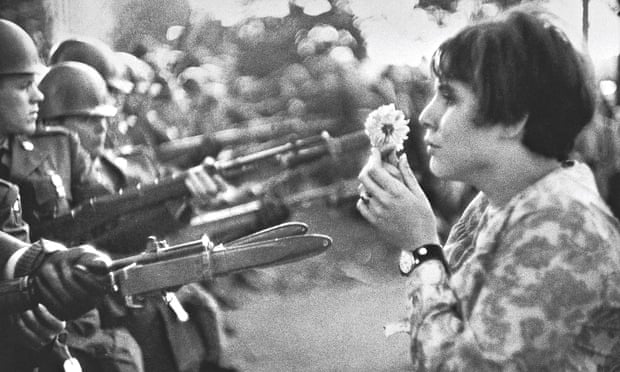 |
| Anshan (China), 1957 |
 |
| London, 1954 |
"I am not either a war photographer or news photographer.. I have always been more sensitive to the beauty of the world than to its violence and monsters."
I came across the work of French photojournalist Marc Riboud in the book A-Z of Photographers by Michael Koetzle, which I often sift through when looking for inspiration for my photography work. His work grabbed my interest in particular when I came across his photographs in The Concerned Photographer (1968), edited by Cornell Capa. Which is a collection of photographs showing post war crisis from 8 of the most prominent photojournalists at that time, including Don McCullin, Bruce Davidson and Marc Riboud. Riboud's photographs were taken in Eastern Asia in countries such as China and Vietnam, and show a real compassion and desire to show the human struggle. As many of his images sensitively captured manual labourers and working class families, in places that had just been through periods of war and violence.
What interests me about these particular photographs of Riboud's that are shown in The Concerned Photographer is the more humanist approach he took in representing these areas experiencing periods of war and violence. I like that his approach to photojournalism steered away from the more gritty war photography and instead focused on communities and cultures. As this is a perspective that reveals even more about the violence in my opinion in terms of the wider context that these situations have occurred in.
What interests me about these particular photographs of Riboud's that are shown in The Concerned Photographer is the more humanist approach he took in representing these areas experiencing periods of war and violence. I like that his approach to photojournalism steered away from the more gritty war photography and instead focused on communities and cultures. As this is a perspective that reveals even more about the violence in my opinion in terms of the wider context that these situations have occurred in.
In Marc Riboud (Photofile) he talks about what he refers to as the pleasures of seeing. That he feels a "double tension" in taking photographs; "the fear of destroying an intimacy by approaching it and at the same time the strong desire to photograph as close as possible". By this he is referring to the appeal of photographing something up close that you wouldn't dare stare at and when looking at his street photography it is very clear what Riboud is referring to. He seems to have a curiosity for intimate moments yet captured them in a removed way and doesn't interact with the subject while photographing them.
His photographs reveal to us a modest approach to photography and a constant searching of truth, stories and intellect in his subjects.
One of my favourite photographs of Riboud's is Young Girl With a Flower which shows seventeen year old Jan Rose Kasmir holding a chrysanthemum up to a soldier’s rifle bayonet. At the Pentagon in Washington D.C on October 21st, 1967; the location for one of the most influential demonstrations against the war that was taking place in Vietnam. Not for its crowds or levels of violence but because of the impact it had on the American population and government’s perspective on their involvement in the Vietnam war. What I think is so potent about this photograph is the tenderness that we get from young Kasmir who appears to be pleading with these soldiers of a similar age to her.
This image shows the determination Riboud had for finding Bresson's decisive moment. The emotion and symbolism captured in this image is so telling of the circumstances at this time and to see such a young girl standing up for what she believes in is incredibly powerful. We see Kasmir’s flower, a symbol of peace and innocence being put at a knife’s edge across a bayonet. This could be said to represent what America was doing to its own people in Vietnam and the lives at stake over the entire conflict. The watch on Kasmir’s wrist could also symbolise mortality being threatened by the control of forces, and that time is so fleeting when human lives are on the line. For Riboud to get so close to this moment and yet still manage to capture it in such an intimate way without interrupting it shows a real skill Riboud had as a photographer in terms of the presence he made around people.
 |
| France, 1987 |
 |
| Houston (USA), 1987 |
 |
| Istanbul, 1998 |
 |
| Villeurbanne, 1984 |
Looking at Riboud's work has made me think a lot more about my presence as a photographer when taking candid and street photography. It's clear that you need to spend a lot of time with your subjects but also be quite removed. They need to feel comfortable enough around you that they don't notice you. Something that can be difficult when doing street photography for example as if your presence seems overly cautious or malicious that is when people will begin to feel uncomfortable and notice you more. I don't think this kind of photography should be voyeuristic however and I would really like to build my confidence in taking photographs of the general public.
I'm still not sure about my relationship photographs. Events photography is really appealing to me because I can be removed from my subjects in order to capture candid moments showing relationships and people also wouldn't take issue with me being there. I do events photography for AMATA so I may try and find a way to do a project on maybe certain kinds of events or an element of events that interests me.









No comments:
Post a Comment